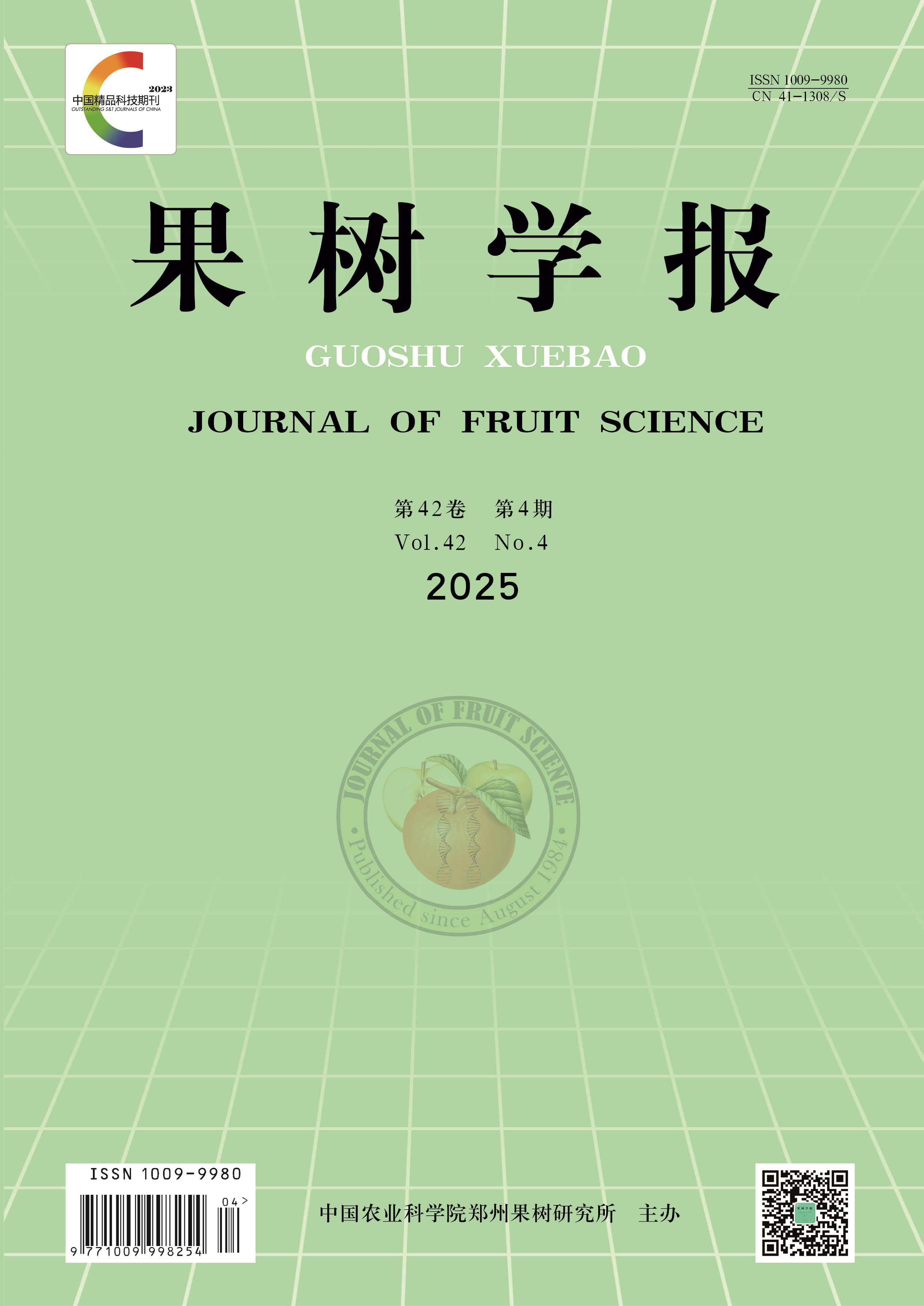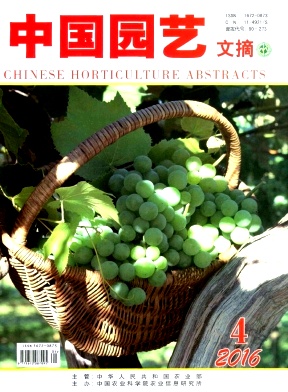摘 要:
【Objective】To verify the reliability of the established soil water potential threshold values to trigger irrigation at different fruit developmental periods in'Kyoho'grape.The soil water potential threshold value was -10.0 kPa after berry set,-15.0 kPa from berry first rapid growth period to seed hardening,and -20.0 kPa from veraison to the maturation period,which were established in our previous studies based on berry growth,leaf photosynthetic rate,and the allocation of photosynthetic products to fruit.These threshold values should enable rapid berry expansion and more photosynthetic products transported to fruit,and have no significant influence on leaf net photosynthetic rate.【Methods】6-year-old potted own-rooted'Kyoho'grapevines were used as the experimental materials.Medium irrigation(according to the established soil water potential threshold values before to trigger irrigation during pivotal fruit developmental periods,which were berry set,the first rapid growth period,and veraison) and three treatments of over irrigation,stress irrigation and high stress irrigation were set up.The soil water potential threshold value to trigger irrigation of over irrigation was-5 kPa during the whole growing season.The threshold values for stress irrigation and high stress irrigation were 5 kPa and 10 kPa,respectively,smaller than the established soil water potential threshold value during pivotal fruit developmental periods(-15 kPa,-20 kPa,and-25 kPa for stress irrigation,and-20 kPa,-25 kPa,and-30 kPa for high stress irrigation).Soil water potential was determined with three waterproof soil moisture tension meters for each treatment during the whole experiment process.Then the phenological periods,shoot length,shoot diameter,leaf area per shoot,leaf chlorophyll content,the diurnal variation of photosynthetic rate,berry diameter,total soluble solid content,titratable acid content,ratio of soluble solid content to titration acid,anthocyanin content and pinching times per shoot were determined to compared tree growth,berry growth,fruit quality,and labor costs for the four treatments.Leaf chlorophyll content was determined by SPAD-502 chlorophyll meter.The electronic digital display saccharometer(DR103) was used to determine the total soluble solid content in fruit juice.The titratable acid content equivalent to tartaric acid content was determined using the acid-alkali neutralization titrimetric method.The spectrophotometer method was used to determine anthocyanin content in grape skins.【Results】The lower the soil water potential threshold value to trigger irrigation,the earlier the flowering period,but the later the veraison.Shoot length,shoot diameter,and leaf area per shoot increased during the whole growing season.Shoot growth slowed down after flowering,and shoot growth became rapid again during seed hardening.The amount of shoot growth was reduced with the decreasing of the soil water potential threshold value,and shoot growth of over irrigation was significantly greater than that of the other three treatments.Medium irrigation had moderate shoot length,shoot diameter and leaf area with less pinching times than over irrigation.The leaf chlorophyll content of the four treatments increased first,then decreased with the progress of phenological periods,and reached a peak value at seed hardening.The differences in leaf chlorophyll content in medium irrigation from the other three control treatments were not significant.The diurnal variations of photosynthetic rate of the four treatments at flowering,the first rapid berry growth period and seed hardening were similar,which presented bimodal curves and reached peak values between 8:00 to 10:00.The differences in maximum value of photosynthetic rate of the four treatments were not significant.As a whole,the photosynthetic rate in over irrigation and medium irrigation was higher than that in stress irrigation and high stress irrigation.Leaf photosynthetic rate during the first rapid berry growth period was higher than that during the other two periods,and the diurnal fluctuation of photosynthetic rate was smaller during seed hardening.Berry growth followed a classical double sigmoid pattern.Before veraison,the higher the soil water potential threshold value to trigger irrigation,the bigger berry diameter.While berry growth became the fastest of all after veraison,and berry diameter at ripening of medium irrigation was larger than that of the other three control treatments.The total soluble solid content in fruit decreased gradually with the increasing of soil water potential threshold value at veraison.During ripening,medium irrigation had the highest total soluble solid content,which was 19.0% and significantly higher than the other three control treatments.Over irrigation had the lowest total soluble solid content,which was 16.1%.The titratable acid content of medium irrigation and stress irrigation were lower than that of the other two treatments.They were both 0.33% and significantly lower than over irrigation and high stress irrigation.The titratable acid content of over irrigation was the highest of all,which was 0.39%.At veraison,the ratio of total soluble solid content to titratable acid reduced with the increasing of the soil water potential threshold value.This was consistent with the veraison of each treatment.While the ratio of total soluble solid content to titratable acid of medium irrigation was the highest at ripening,which was 57.6.The next was that in stress irrigation,which was 53.2.The ratios of total soluble solid content to titratable acid of these two treatments were significantly higher than those of over irrigation and high stress irrigation.The anthocyanin content decreased with the increasing of soil water potential threshold value to trigger irrigation at veraison and ripening.The anthocyanin content of medium irrigation was 0.078 mg·g~(-1) at ripening,which was significantly higher than that of over irrigation.【Conclusion】Compared with over irrigation,stress irrigation,and high stress irrigation,medium irrigation had the best fruit quality and tree growth.This indicated that the established soil water potential threshold values to trigger irrigation at different fruit developmental periods reported in our previous studies were practical.The optimal soil water potential threshold values to trigger irrigation are -10.0 kPa after berry set,-15.0 kPa from berry first rapid growth period to seed hardening,-20.0 kPa from veraison to the maturation period,and-10.0 kPa after harvest for 'Kyoho' table grape.These soil water potential threshold values could keep moderate tree growth,high leaf photosynthetic rate,rapid berry growth,and high quality fruit.





